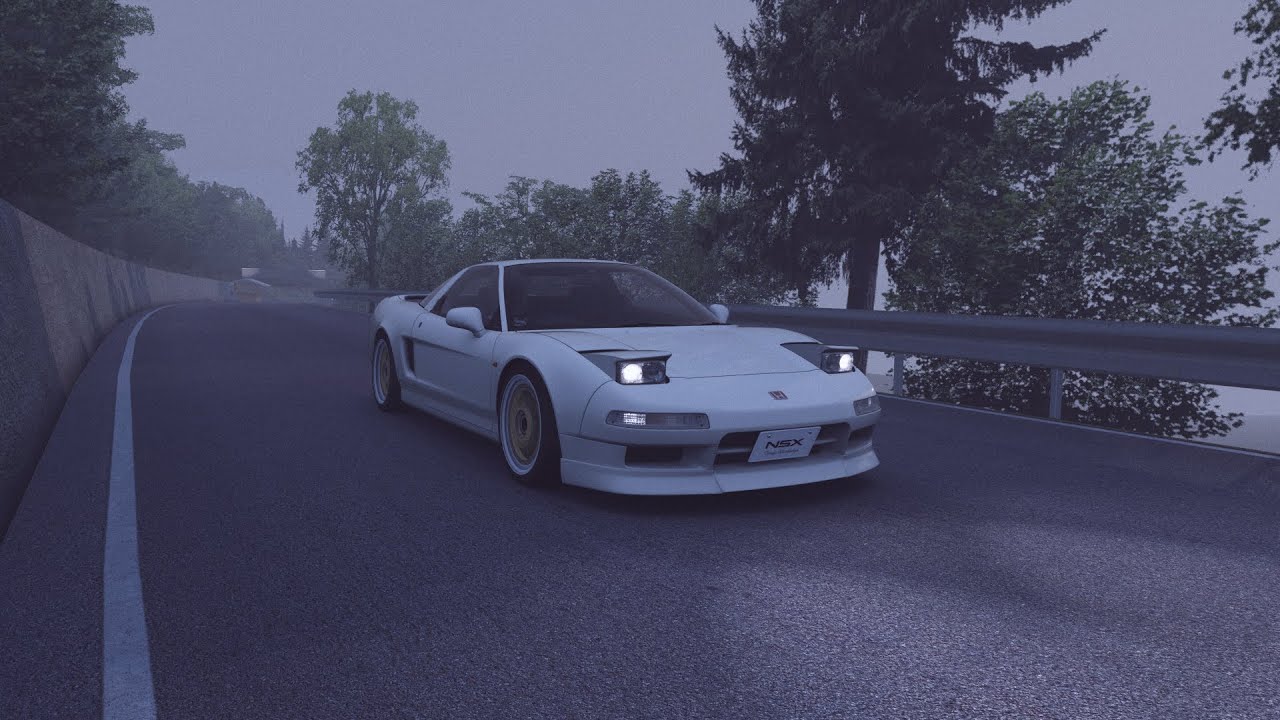
Hey this is my first video, hope you like it.
If you enjoyed subscribe to my channel and like the video, and if you did not liked you can dislike it is okay!
Car mod: https://drive.google.com/file/d/1ipkMoyVedkDN-fNz87FToLKmTbBahN0a/view
Track mod: Original AC content
Weather mod: Sol shaders
Info about the run:
Start of the run – 8:19 AM
Weather – Foggy
Temperature – 3.8°C
Wind speed – 20.5 Km/h
Car – Honda NSX na1 (Atermarket dampers and springs,1.5 way LSD, Bigger brakes, Anti-roll bars, Remap, Cams, Instake and exhasut) +- 350hp
Track – Trento-Bondone, Italy
Description:
Track: The Trento-Bondone Hill Climb is a hillclimbing competition starting in Trento and finishing on the Monte Bondone, organised by the Scuderia Trentina of the Automobile Club d’Italia. The first competition event was held on 5 July 1925.[1] The course is 17.3 km (10.75 mi) in length. It was described as “an absurdly dramatic climb” that begins in the Adige valley at 275 metres elevation and climbs to 1650 metres in the Alps, for an average gradient of 7.9%.[2] The track is part of the European Hill Climb Championship. In 2014, the course was recreated in the videogame Assetto Corsa. (wikipedia)
Car: (…)This experience, in part, convinced Honda leadership that the company should consider developing a pure sports car. As a result, in 1984, Honda commissioned the Italian car styling house Pininfarina to design the concept car HP-X (Honda Pininfarina eXperimental),[2] which had a C20A 2.0 L V6 engine in a mid-mounted configuration. After Honda committed to a sports car project, the company management informed the engineers working on the project that the new car would have to be as fast as anything coming from Italy and Germany.[3] The HP-X concept car evolved into a prototype known as NS-X, which stood for “New”, “Sportscar” “eXperimental”.[4] The prototype and eventual production model—which was marketed as the NSX— were designed by a team led by Honda Chief Designer, Masahito Nakano, and Executive Chief Engineer, Shigeru Uehara (who were subsequently placed in charge of the S2000 project).
The original performance target for Honda’s new sports car was the Ferrari 328 (and later, the 348) as the design neared completion. Honda intended its sports car to meet or exceed the performance of the Ferrari, while offering superior reliability and a lower price.[citation needed] For this reason, the 2.0 L V6 engine utilised in the HP-X was shelved and ultimately replaced with a significantly more powerful 3.0 L VTEC V6 engine. Over the course of development of the NSX, many engines were used, ranging from the 2.7-litre single overhead camshaft V6 engine from the Honda Legend/Honda Coupé to the 3.0-litre single overhead camshaft V6 engine, used subsequently in 15 test mules.[5] Honda eventually settled on a non-VTEC, 3.0-liter double overhead camshaft 24-valve V6 engine selected for the production model. This engine generated a maximum power output of about 250 hp (186 kW; 253 PS) and 282 N⋅m (208 lb⋅ft) of torque, with a redline of 7,300 rpm. However, at the same time, Honda was working on its revolutionary VTEC variable valve timing system, with plans to release it on the company’s home-market 4-cylinder Integra.[6] Honda’s then-president Tadashi Kume, himself a highly-skilled and respected engine designer, questioned the NS-X designers’ logic in foregoing the VTEC system for Honda’s new flagship sports car, while it was being used on the lower-market Integra. As a result, the engine was redesigned very late in the development process “to achieve the desired levels of performance and durability”; Honda designed a new cylinder block with 6-bolt main caps and larger cylinder heads to contain the complex VTEC mechanism. Innovative connecting rods made from a titanium alloy were used to lower reciprocating weight, while increasing overall rod-strength—something which increased the engine’s maximum rpm by 700, resulting in a final redline of 8,000 rpm. A consequence of this last-minute engine change was that the new C30A engine was too large to fit in the NS-X’s engine bay, which had been carefully sized for the smaller heads of the non-VTEC DOHC 3.0 liter engine.
The exterior design had been specifically researched by Uehara after studying the 360-degree visibility inside an F-16 fighter jet’s cockpit.[7] Thematically, the F-16 came into play in the exterior design as well as establishing the conceptual goals of the NSX. In the F-16 and other high performance air-crafts such as unlimited hydroplanes along with open-wheel race cars, the cockpit is located far forward and in front of the power plant. This “cab-forward” layout was chosen to optimize visibility while the long tail design enhanced high speed directional stability.[8] The NSX was designed to showcase several automotive technologies, many derived from Honda’s F1 motor-sports program. (…) (wikipedia)
wikipedia.org/wiki/Honda_NSX_(first_generation)






















